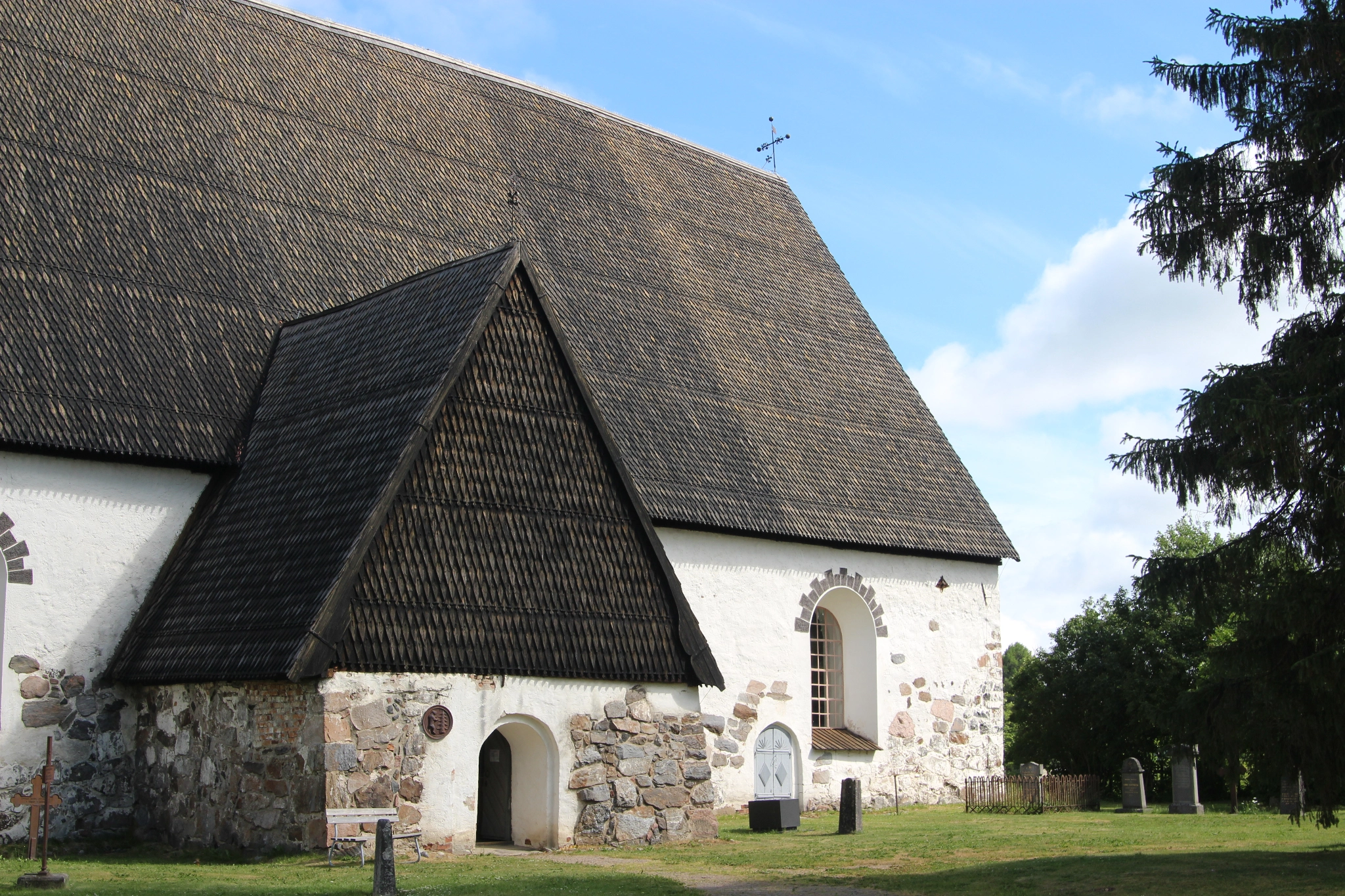
Isokyrö Old Church


Isokyrö Old Church
This church, devoted to St. Laurentis, is the oldest and most remarkable historic sight in the whole of southern Ostrobotnia. Amidst the oldest settlement of the province it dominated all the large church province of Pohjankyrö, which, in the course of centuries, has been divided into 27 parishes.
According to tradition, on the very same spot there was a smaller wooden church. It was built by the monks of the monastery which was situated at the same place as the present-day vicarage of Isokyrö. The earliest phase of the church is represented by the vestry on the northern side of the church. Built of brick it is unique in our medieval church architecture.
The body of the church built of grey brick was, according to tradition, erected round the old wooden church. Some facts show that it is of a later date than the vestry, probably build towards the end of the 14 th century. The height of the firm walls, which are 5-7 feet thick, is 20 feet and the ridge of the steep shingle roof is as high as 80 feet. The armoury on the southern side was built later than the church. A number of legends are told about the building of the church, which must have been gigantic work of that age. The best-known of them is one that tells us that Tohni, a man from Töysä, carried a big stone bricked in the western gable, from as far as the Simpsiö in Lapua. That is why the round window under the stone is called " Tohni`s window". It is the only window that still has its original size. In the restoration of 1707 the windows of the southern wall and the eastern gable were enlarged; at the same time a new window was broken through the northern wall. At some distance from the church itself there was a wooden bell tower, which was pulled down in 1881 and the bells of which now toll in the bell tower of the new church.
Among the belongings of the church we can see a number of medieval wood carvings. The statue of the second patron saint of the church, St. Henry,is no doubt of the greatest artistic value. This statues is representing St. Laurentis and a saint monk.Judging from the style, all the pieces of sculpture mentioned above are made in the early 1400 `s. The statue of St. George on the projection of the western gable, however, dates back to the late Middle Ages. From the same period are also the two large alter cupboards on both sides of the chancel window. The cupboards are full of pieces of sculpture from the Hanseatic period. The church also has two medieval cassocks and a memorial plaque from 1681 donated by the family Israel Alftan. The picture on it is supposed to represent the old church as it was then.
